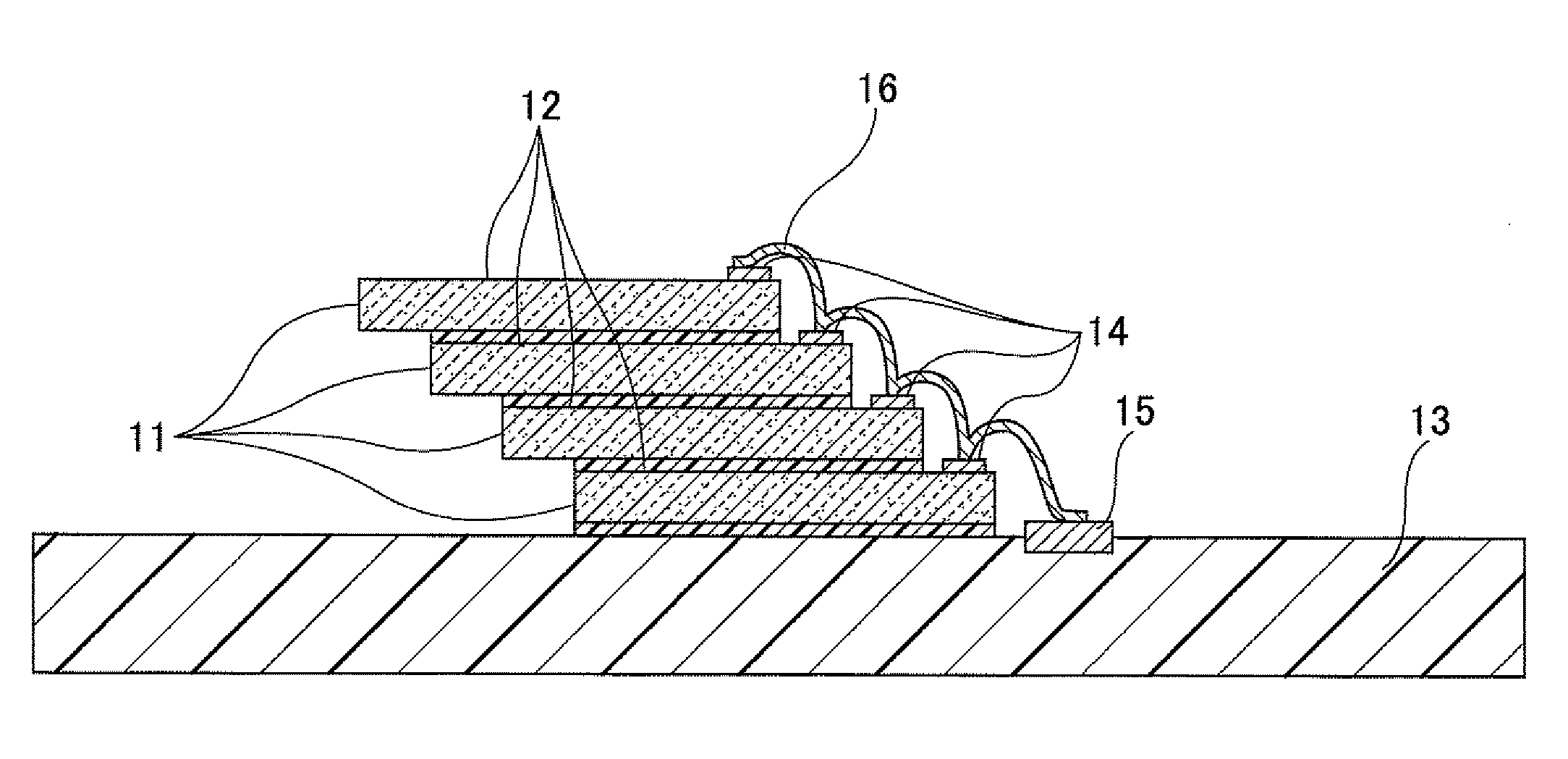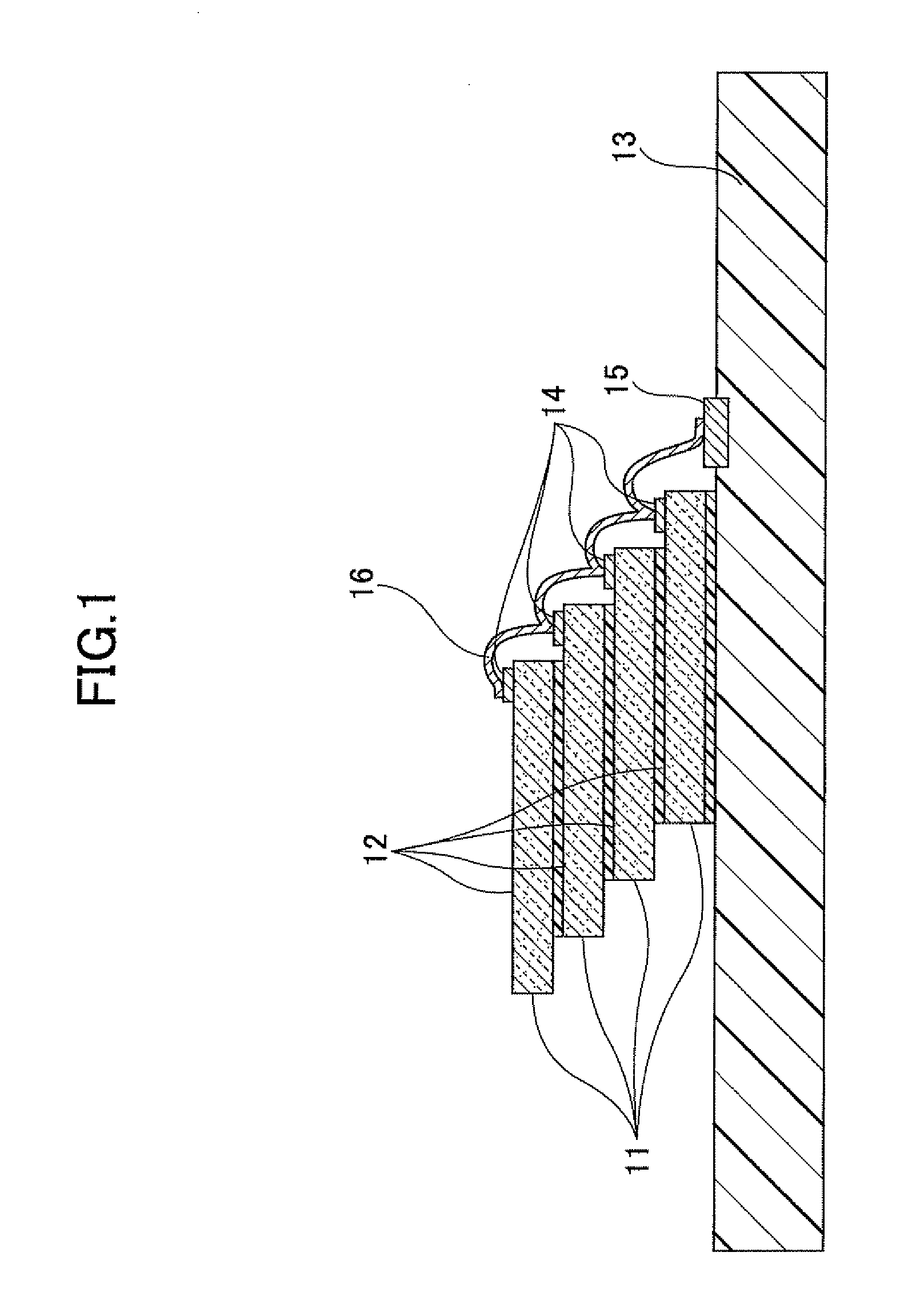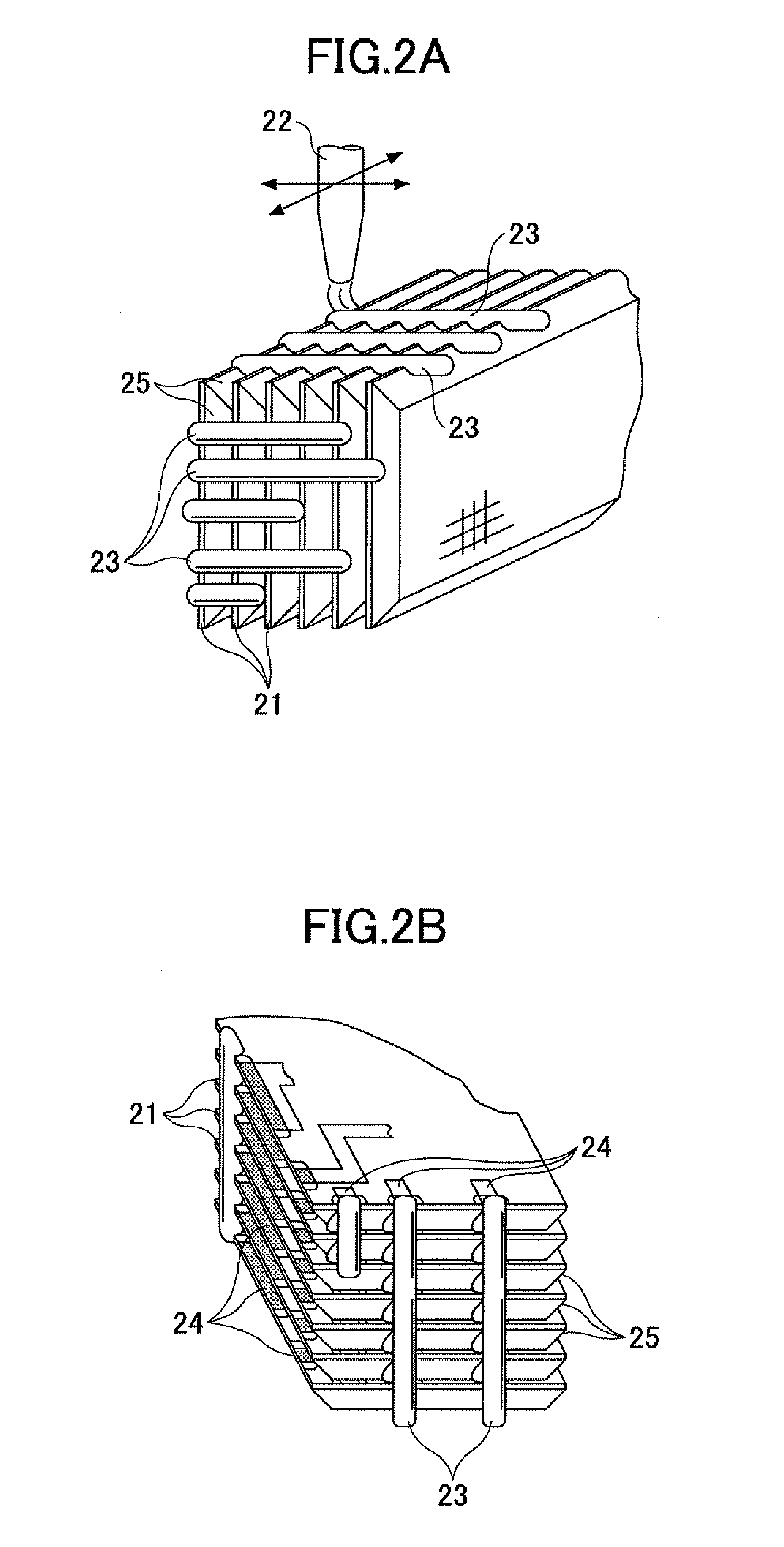Semiconductor chip stacked structure and method of manufacturing same
- Summary
- Abstract
- Description
- Claims
- Application Information
AI Technical Summary
Benefits of technology
Problems solved by technology
Method used
Image
Examples
first embodiment
Variation of First Embodiment
[0082]In the sub-step 2-a of placing semiconductor chips on a tentative adhesive film according to the first embodiment, the semiconductor chips are placed at respective positions on the tentative adhesive film in order to provide sufficient spacing intervals between the semiconductor chips. In a variation thereof, placement for providing spacing intervals is achieved by use of another means. That is, a dicing tape for supporting a semiconductor wafer at the time of dicing is stretched and expanded in the radial directions of the wafer after the dicing, thereby providing sufficient spacing intervals between the semiconductor chips.
[0083]FIG. 6 is a flowchart illustrating a method of manufacturing a semiconductor chip stacked structure according to the variation of the first embodiment.
[0084]The manufacturing method includes a dicing step S601, a chip sealing structure forming step S602, a chip face exposing step S603, an electrical connection providing s...
second embodiment
Advantage of Second Embodiment
[0103]A manufacturing method is provided to mount a chip stacked structure on a wiring substrate in a flip-chip manner. With this method, a small-size chip stacked structure comparable in size to the chips can be mounted on the wiring substrate in a short time. The productivity and quality of semiconductor chip stacked structures can thus be improved. Further, the method of providing flip-chip connection as illustrated in FIG. 10B can expand the range of semiconductor chip types that can be used in the semiconductor chip stacked structure. For example, a CPU serving as a logic circuit having a large number of terminals may be stacked with memory semiconductor chips, thereby contributing to functional expansion.
Third Embodiment
[0104]The third embodiment is directed to a semiconductor chip stacked structure that includes a wiring substrate and a stack of plural chip sealing structures each of which has the back surface of the chip being exposed.
[0105]FIG....
third embodiment
Variation of Third Embodiment
[0109]FIGS. 11A through 11C are drawings illustrating beveled corners of the chip sealing structures according to a variation of the third embodiment. Corners 50C are beveled, so that the angle at which the electrically conductive joining members are cut is set equal to a sharp angle. This serves to broaden the connection faces of the electrically conductive joining members that meet bonding wires. Beveling is performed to provide a flat surface in FIG. 11A, and is performed to provide a curved surface in FIG. 11B. In FIG. 11A, a flat beveled surface is provided at the corners of chip sealing structures 111, thereby forming an angle βsmaller than the right angle between a resin surface 115 and the axial direction P of an electrically conductive joining member 113 at an end face 114 thereof. This arrangement serves to provide a reliable electrical connection as in the case of FIG. 5C, in which the electrically conductive joining member 54 is bent such tha...
PUM
 Login to View More
Login to View More Abstract
Description
Claims
Application Information
 Login to View More
Login to View More - Generate Ideas
- Intellectual Property
- Life Sciences
- Materials
- Tech Scout
- Unparalleled Data Quality
- Higher Quality Content
- 60% Fewer Hallucinations
Browse by: Latest US Patents, China's latest patents, Technical Efficacy Thesaurus, Application Domain, Technology Topic, Popular Technical Reports.
© 2025 PatSnap. All rights reserved.Legal|Privacy policy|Modern Slavery Act Transparency Statement|Sitemap|About US| Contact US: help@patsnap.com



